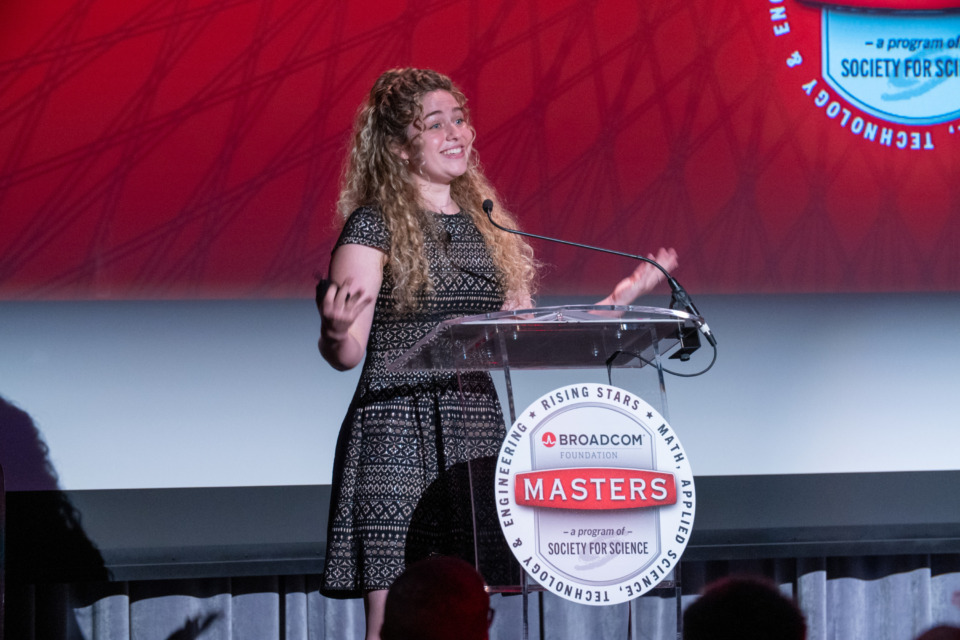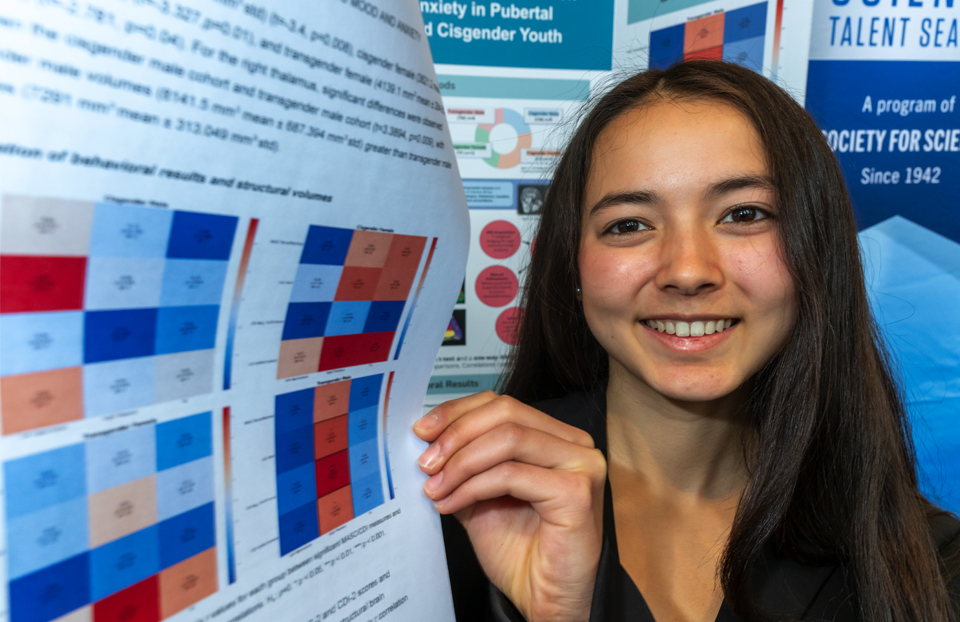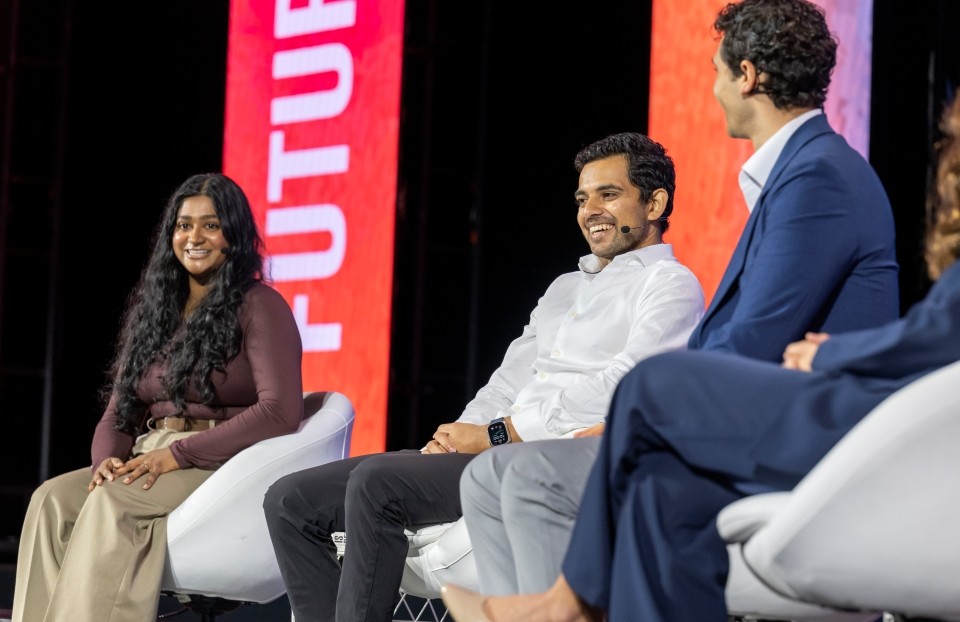Westinghouse STS alumni share 1962 competition memories
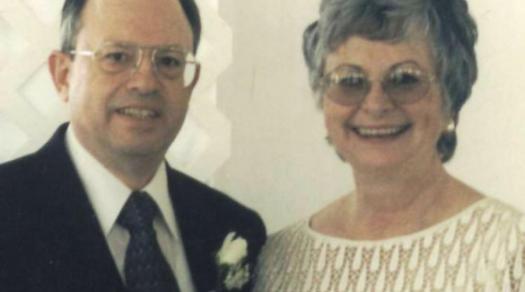
The Westinghouse Science Talent Search 1962 competition opened “a whole new world of possibilities” for Judith and Leonard Gordy, who married in 2003. It was where they first met, and led them to a path of teaching science, working at pharmacies, and building MRI machines.
Leonard has visited several STS public exhibitions of projects since competing in 1962, and he’s amazed with the level of science.
Judith remembers asking for a chemistry set and microscope for Christmas. She was the only one in her family who had an interest in science. Leonard’s father was a self-taught electronics engineer who exposed him to all areas of science at an early age.
Both of you were Westinghouse STS 1962 finalists. Do you remember interacting with one another at STS?
Judith Jaime Kanner Gordy remembers interacting with Leonard at STS 1962. “He was a lively, enthusiastic fellow who seemed to be everywhere with his Polaroid camera — which resulted in a really nice photo of me next to President Kennedy,” she said. “He was amazed that I got so excited over seeing snow — it snowed there the day after our banquet and complicated the return home of many of the finalists; Leonard was happy because he was allowed to take the train home.”
“I certainly tried to interact with Judy in Washington,” Leonard said. “I hoped to go to school in California, so meeting an intelligent, attractive girl from there seemed like a good idea. She probably remembers me as a pest.”
Their most memorable experiences at STS 1962 varied.
For Leonard, it was meeting President Kennedy. For Judith, it was meeting the finalists and hearing their stories.
“STS provided many opportunities for us to meet with local scientists at their work sites,” she said. “Of course, we did our fair share of sightseeing in the Washington, D.C. area, which was a real thrill for me.”

Judith and Leonard prepared research for the STS competition.
Leonard measured gas discharge plasmas using microwaves. This research started with a summer program at Union College, Leonard said. “But I used my own microwave equipment, which I had been using in a magnetic resonance project, so I could continue the work at home,” he said.
He enjoyed speaking to the public about the operating display equipment he presented. Upstate New York didn’t participate in the science fairs then, but had their own Science Congress student competitions which required giving a demonstration talk. “So I was used to speaking about my projects and answering questions for a range of audiences,” he said.
Leonard has since attended several STS public exhibitions of projects in recent years. “I am amazed at the level of the projects, but it is hard for me to judge who did what work,” he said. “Back in 1962, nearly all could be done in a home laboratory.”
Judith, meanwhile, was researching radioactive kelp. “With the use of a homemade paper chromatography chamber, a vial of radioactive cobalt from my school, and many trips to the Pacific Ocean, I was able to show that certain amino acids in kelp absorbed the radioactive cobalt from seawater,” Judith said. “Since drums of radioactive waste that had been disposed of in the Pacific Ocean were disintegrating, this radioactivity could contaminate the kelp that was used as not only a food source in many countries, but also in the USA as an additive in some foods, including bread and ice cream.”
In 1962, the project that a competitor brought to STS didn’t have to be the same as the one they entered in the competition. “So, I used a project that I worked on in my senior year, on piezoelectric crystals,” Judith said. “It was a different project because I had already won the local science fair competition with the kelp project and I had to have another award-winning project to earn enough points to receive their college scholarship.”
STS was influential in both of their career paths, in addition to being the way that Leonard and Judy met. The competition encouraged them to pursue their interests in science.
“The STS experience was instrumental in giving me the confidence I needed to pursue my love of science,” Judith said. She discovered that there were other students with the same interests who faced similar challenges in pursuing a career in science.
It was empowering to meet other girls like me who were interested in science and being honored for their scientific talents.
“As a half-Hispanic girl from Southern California, the only girl in my high school who belonged to the science club, and audited the Practical Electronics Class, it was empowering to meet other girls like me who were interested in science and being honored for their scientific talents,” Judith said.
Leonard believes competing in STS helped him get admitted to Caltech, “given that I went to a public high school with no really advanced classes,” he said.
At STS, the participants had the opportunity to meet with a scientist of their choice in Washington. Leonard asked to meet with a scientist at the National Bureau of Standards, whose work he’d cited. “By then, his group had stopped working on gas discharge electron tubes and moved into the characterization of semiconductor materials, especially silicon,” Leonard said. “My meeting with them led to a summer job — for the next six years. That got me into experimental semiconductor physics.”
It was those summers in Washington that exposed Leonard to the Smithsonian and art museums. He discovered his enjoyment of live theater and ballet, which have been life-long interests. This is one of the reasons he loves living near New York City.
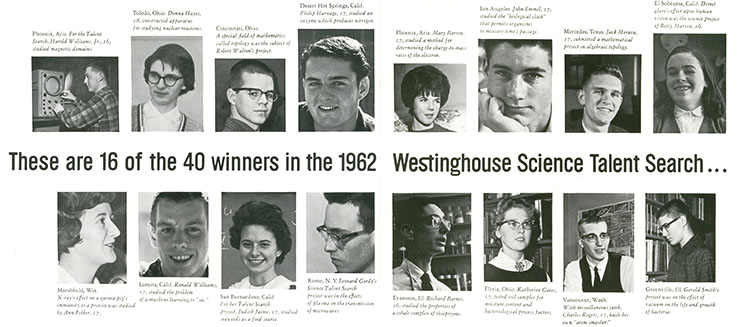
Their careers have been rich and diverse.
Judith taught general science at both the junior and senior high school level. “It was a good experience as I used the ISCS experiment-based program that emphasized critical thinking in a self-paced milieu,” she said. “The texts were also available in Spanish, which helped the migrant farm worker children who were often in my classes.”
After 13 years of teaching, she became a pharmacist and worked in various practice settings. The most rewarding aspect, she said, was working as a consultant pharmacist in medication management for the elderly.
Leonard had the opportunity to participate in two fascinating projects over the years. At GE Corporate research and development, he worked on evaluations and designed parts of their first Computed Tomography and MRI machines. Then he moved to Kearfott Guidance & Navigation Company, working on various aspects of the Trident 2 guidance systems’ stellar sensor.
Very little of my career path turned out the way I expected. Being flexible and broadly based is important.
Did you ever hold alumni reunions or keep pen pals with friends from STS?
Judith and Leonard kept in touch for many years via letters and Christmas cards. He visited her late husband and her a couple of times. “After my first husband died, Leonard and I reconnected and got married in 2003,” she said.
“I kept in touch with Ann Fulkner for a short time and with Kathy Gates until she died. Kathy visited me once in the 1990s,” Judith said. “Kathy, Leonard, and I were the only STS 1962 finalists that came to the STS 50th celebration.”
The first summer or two he spent in Washington, a group of Society alumni celebrated the fourth of July together, Leonard said. He roomed for two to three years at Caltech with Ronald Royce, a finalist from 1963. “There were three other 1962 finalists with me at Caltech, and we did see each other all the time,” he said.
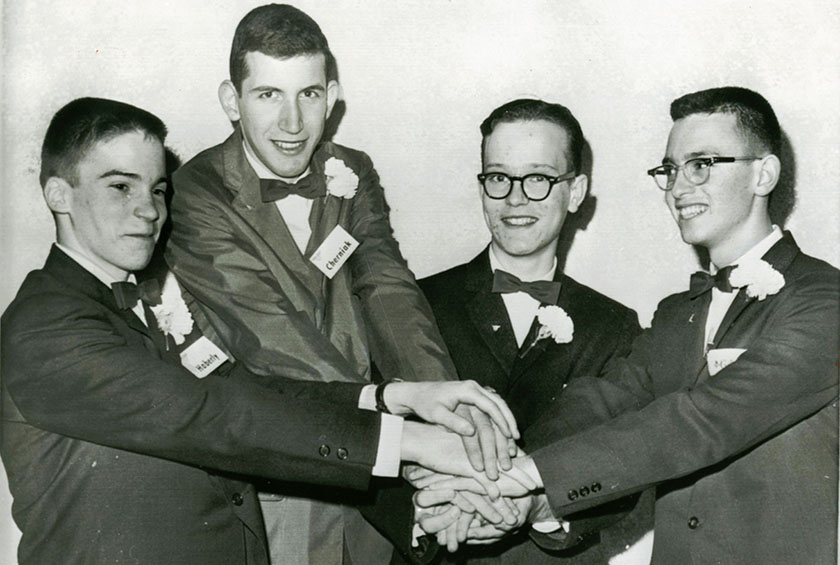
Was science and research a big part of your family? How did you become interested in science?
No one on either side of Judith’s family was interested in science or math and none had ever gone to college. “My father, a truck mechanic, and my mother, a housewife, were very supportive of my interest in science and math,” she said. “I remember asking for a chemistry set and later a microscope for Christmas when I was 8 years old. Santa brought one, but I was very disappointed because the instruction book was like a cookbook and didn’t explain on a molecular level what was happening and why. From then on, I was very much interested in finding out how the physical world was put together and worked.”
Leonard’s father was a self-taught electronics engineer with an interest in all of science and engineering. “My brother and I were continually exposed to all areas of science, not just physical sciences. And whatever we were interested in was pursued,” he said.
What is your advice to young people interested in science or math?
“Very little of my career path turned out the way I expected,” Leonard said. The two major programs he worked on were only peripherally connected to his major in solid state physics. Being flexible and broadly based is important. “I can’t really describe how or why, but I sense that my undergraduate experiences in the ‘culture’ of science was beneficial in a working environment which was often strongly engineering oriented.”
Judith said to “use your time and talent to nurture your curiosity, explore your interests, and embrace challenges that come your way in the pursuit of knowledge.”
